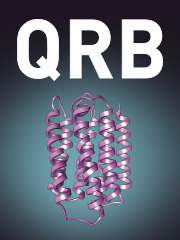Article contents
Molecular mechanisms of the GABA type A receptor function
Published online by Cambridge University Press: 14 January 2025
Abstract
The GABA type A receptor (GABAAR) belongs to the family of pentameric ligand-gated ion channels and plays a key role in inhibition in adult mammalian brains. Dysfunction of this macromolecule may lead to epilepsy, anxiety disorders, autism, depression, and schizophrenia. GABAAR is also a target for multiple physiologically and clinically relevant modulators, such as benzodiazepines (BDZs), general anesthetics, and neurosteroids. The first GABAAR structure appeared in 2014, but the past years have brought a particularly abundant surge in structural data for these receptors with various ligands and modulators. Although the open conformation remains elusive, this novel information has pushed the structure–function studies to an unprecedented level. Electrophysiology, mutagenesis, photolabeling, and in silico simulations, guided by novel structural information, shed new light on the molecular mechanisms of receptor functioning. The main goal of this review is to present the current knowledge of GABAAR functional and structural properties. The review begins with an outline of the functional and structural studies of GABAAR, accompanied by some methodological considerations, especially biophysical methods, enabling the reader to follow how major breakthroughs in characterizing GABAAR features have been achieved. The main section provides a comprehensive analysis of the functional significance of specific structural elements in GABAARs. We additionally summarize the current knowledge on the binding sites for major GABAAR modulators, referring to the molecular underpinnings of their action. The final chapter of the review moves beyond examining GABAAR as an isolated macromolecule and describes the interactions of the receptor with other proteins in a broader context of inhibitory plasticity. In the final section, we propose a general conclusion that agonist binding to the orthosteric binding sites appears to rely on local interactions, whereas conformational transitions of bound macromolecule (gating) and allosteric modulation seem to reflect more global phenomena involving vast portions of the macromolecule.
Keywords
Information
- Type
- Review
- Information
- Copyright
- © The Author(s), 2025. Published by Cambridge University Press
References
- 1
- Cited by

